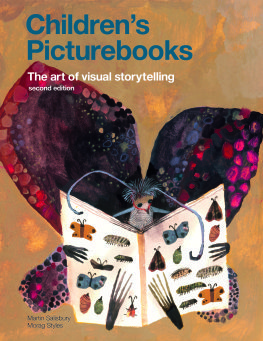Inspiring Young Readers
 posted on 06 Jan 2020
posted on 06 Jan 2020
Children’s Picturebooks: The art of visual storytelling by Martin Salisbury and Morag Styles
One of the more encouraging developments in the world of books over recent years has been the growing acknowledgement of the value and importance of children’s literature and especially picture books. For years they have been ignored by all but a few and treated as essentially ephemeral and, in most cases, superficial. But there has been something of a breakthrough in terms of overhauling these assumptions both in the publishing world and in popular opinion. Children’s book illustrators and authors are finally beginning to be given the credit they deserve for their art and for the pivotal developmental role they can play in children’s lives – and maybe the lives of adults too because here at The Letterpress Project we resist the idea that children’s books are ‘just for children’.
Key to bringing this change about has been the advocacy of those critics, commentators and academics who continued to champion the genre despite all of the attitudinal barriers that seemed to constantly be placed in their path. Martin Salisbury and Morag Styles are two such academics and this most recent collaboration, Children’s Picturebooks: The art of visual storytelling, is in fact a new, revised, version of the first edition of the same name that was published in 2012.
It’s great to see that much of what made the first edition such a treat has been retained and the revisions are valuable additions rather than mere window-dressing. So we still have the same basic infrastructure to the book – it tells the history of the writing, making and using of children’s books through the ages and also uses examples that enhance the message that children’s picture books are a global phenomenon with universal messages. It really is uplifting to see examples of children’s books from different cultures and in different languages and yet not find those different languages a barrier to enjoyment or engagement.
Salisbury and Styles also tackle some of the more academic issues that have increasingly become a familiar part of the appreciation of the genre – how do words and images work together to create meaning; what exactly does ‘suitable’ mean when it comes to the age of the reader and subjects of love, sex and death; how does the publishing industry work and what role does it play in determining what is available.
All of these are issues that need to be addressed but it’s good to see them being taken out of the context of a stuffy academic debate and put into a book that’s also beautiful to look at, to hold and to graze over. This is essentially a book designed to have real world use and, to emphasise that, the authors make quite liberal use of what they call ‘professional’ and ‘student’ case studies that go into more depth on specific books as examples of the key points they are seeking to make. An updating and revision of these examples is one of the key changes the new edition makes.
I was also hugely encouraged to see a whole new section in the book dedicated to non-fiction. In the past I’ve been a critic of the UK publishing industry for their limp response to the variety and quality of non-fiction for children but I’m delighted to now be able to say that there has at last been something of a revolution in this field over recent years.
Perhaps something that the authors might bear in mind for a third edition is to consider a dedicated section on the issue of diverse representations. The fight for better representations of BAME communities and disabilities in particular is still one which needs to be fought and academics of the stature of Salisbury and Styles would provide a great additional lobby for such issues.
Highly recommended and published in its second edition this month.
Terry Potter
January 2020